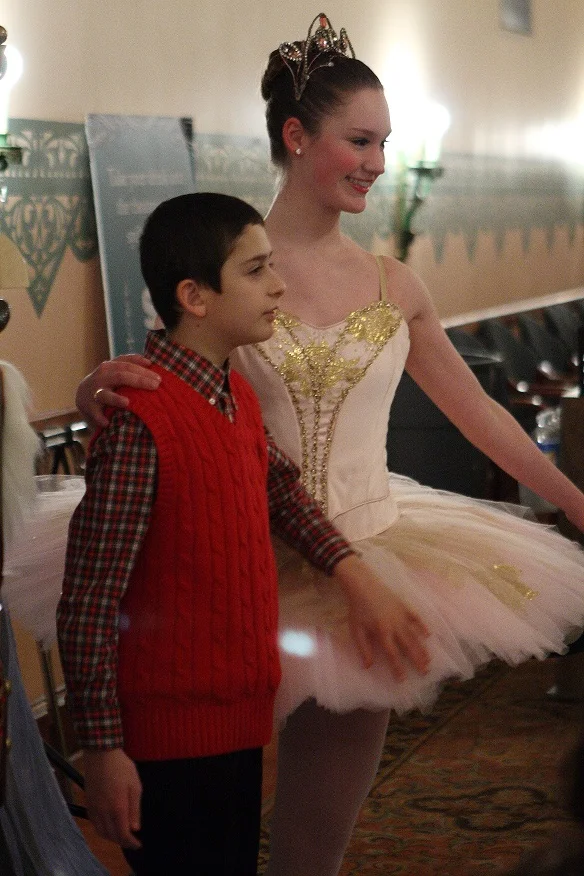As discussed in part 1 of Opening Doors, sensory-friendly programs create exciting opportunities for connection with new audiences, expanding both an organization’s reach and ability to achieve its mission. In part 2, I explored some best practices to ensure successful program implementation including retaining artistic quality, building the budget into overall goals, selecting focused or public performances, preparing families and children prior to the event, and developing a strong support group.
Yet one of the most important aspects of successful programming is the proper training and involvement of staff, volunteers, and artists. Despite any initial concerns or nerves about the uncertainties with this programming, staff members at every organization I spoke with were eager to get involved. Many could personally relate already with knowing someone with autism. Educating the staff about autism and social cognitive disorders prepares them to communicate and interact with patrons.
Staff and Volunteers
Staff members are key for successful implementation, especially those on the front lines or in direct contact with the audience members, such as box office staff, patron services, and volunteers. As Alyssa Melby of Pittsburgh Ballet Theatre recognizes, it is not just the performance, but everything surrounding it that creates the sensory experience. While most organizations cannot physically change the space, they can consider how to alter the environment. Staff members need to know how to make patrons feel welcome and understand how to communicate with people with disabilities. Theatre Development Fund recommends having the same number of volunteers as front of house staff, with about 25% autism professionals. Volunteers should be clearly visible and easily identifiable with matching t-shirts. Pittsburgh Ballet Theatre works with Autism Connection of PA to find volunteers in the region, and having qualified occupational therapists, physical therapists, and other experienced professionals helps families to feel a greater level of comfort in trusting the volunteers to assist with expected or unexpected challenges.
Production and Artists
Artists and members of the production team are likely to have different levels of understanding and experience with sensory-friendly performances. This makes it important to communicate and hold open discussions about what changes will or will not occur and why. Holding special rehearsals or training sessions is particularly valuable. Imagination Stage holds one sensory-friendly performance rehearsal in place of the understudy rehearsal for that week. The rehearsal begins with an overview of sensory-friendly performances, an explanation of the autism spectrum disorder, and a discussion of what differences they can expect. Actor Chris Wilson has performed in sensory-friendly performances at both Imagination Stage and the Kennedy Center. He regards the most valuable aspects of these rehearsals is the time spent discussing why the changes are made and building a foundation for understanding the meaning of sensory-friendly. He comments, “You can give an actor a list of changes to be made in a sensory-friendly performance, and they can technically implement them without any rehearsal…But I think our goal should be to understand. If we understand why we do the things we do, art becomes even more of a leader in making a difference in the lives of these children.” Not all productions warrant a separate rehearsal when minimal changes are involved. Pittsburgh Ballet Theatre simply holds an informational session for the dancers, staff members, and all involved with the production separate from other rehearsals.
During the performance, artists might see a variety of responses to the stimulation on stage. One a child may retreat more into him or herself, while another may be compelled to move closer to the stage or make moaning noises. Philip Dallmann of TDF’s Autism Theatre Initiative explains that this is “the most honest audience you’ll ever have,” which can sometimes be jarring for the performers; yet at the same time, the engagement and excitement from within the audience gives the feeling of a second opening night. Alexandra Kochis, principal dancer at Pittsburgh Ballet Theatre, explains that the automatic feedback, being able to make eye contact, and seeing people smiling and laughing “humanizes” the performance, providing a personal connection.
Moving Forward
Organizations must identify opportunities to grow sensory-friendly programs and develop these valuable audience members. Opening doors to invite families and individuals is an important practice to both serve the community and grow audiences. As families become more comfortable with attending theatre productions, organizations might consider how to help them transition into becoming general audience members. Additionally, as children grow older, organizations must be aware of how to continue serving their needs. Directors of sensory-friendly programs might also consider how they can adapt to serve other developmental disabilities and create a platform to introduce anyone to the arts.
As sensory-friendly programs continue to develop, there is much for organizations to consider and learn while supporting one another. My final report will discuss further details about best practices for sensory-friendly programming along with new developments surrounding this topic. I hope this report will create a starting point for organizations interested in sensory-friendly programming, serve as a guide for internal conversations, or help existing programs identify strategies and ideas from others.
Has your organization developed sensory-friendly programming? Join in the discussion below and share your experiences and additional resources you have identified.




